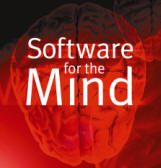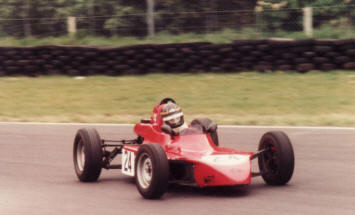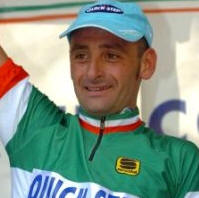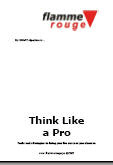Think Like A Pro II
 In
part one of this factsheet, we discussed how the pro's think and perceive differently from us
mere mortals when out on the road.
In
part one of this factsheet, we discussed how the pro's think and perceive differently from us
mere mortals when out on the road.
For part two, we'll look at some of the absolutely free tools and strategies available to help you expand your self-limiting mindset and give you that step up to the, possibly so far, elusive next level of performance.
If you have the inner-hardness of a pro then you may not need to delve too deeply.
If at any point you've let a wheel go, then immediately kicked yourself for doing so, then you might just benefit from the next five minutes.
This edition's pearl of knowledge involves no training, no sweat and no tears. All you have to do is think differently. It's as simple as it is effective; and it's within us all.
Unlock the shackles in your mind, override your negative inner voice, and take control of your thoughts by training them the way you train your body. Positively and with purpose.
The
Inspiration
Nothing in this world is new. Everything we see, use or
need is a development of something that's gone before. The
tools presented to you here are drawn and developed from the countless
studies, research, training and development programmes I've undertaken since
I was old enough to know better and too stubborn to take no for an answer.
The one outstanding sentence that sparked me to think positively came from something I read as a child. Surprisingly, in the last month, I've seen it used in a cycling advert on the internet! How spooky is that?
"What the mind can conceive and believe, the body can achieve." It came, I've subsequently found out, from a man called Napoleon Hill. In the early 1900's he studied fabulously rich and wealthy people and documented their secrets!
It
worked for me
Positive affirmations.

From the age of twelve I told anyone who'd listen, and many who wouldn't, that I was going to be a professional racing driver. Imagine the ridicule, especially as you catch a bus to your school because your parents don't have a car. I then worked out I could walk and save the bus fare! That was step one. p>
Almost everyone else who'd left our school worked in the local meat packing plant! I just wanted to be different. I always believed I would be a racing driver and every hour of every day it's what I worked towards.
I learnt to drive from books and took any job going, to raise cash towards my dream. I even spent a year working down a salt mine.
At 17 I sat in my first racing car, two months after having my first driving lesson and eight months before I passed my test. I truly believed it was my destiny so I made it happen.
My parents humoured me as only parents can. Like some deluded obsessive, they fed my dream, never once trying to deflect me. Maybe I was deluded, because not once did it enter my mind that I wouldn't succeed. Not once.
And because I'd told everyone, I couldn't allow myself to fail.
Obviously I'm not a famous racing driver so that tells you how good I was! But I enjoyed being deluded and having the time of my life for seven years.
Belief
Before Action
The point of the ego
trip above, is to prove you can make things happen
if you believe in them enough and, as we've discussed elsewhere, are prepared to make the sacrifices required to ensure
their fulfilment.
There has to be belief. A goal without commitment and belief is nothing more than a dream. Here we'll help you change your dreams to reality.
Don't let anyone ever tell you that something can't be done or achieved. Unless it's illegal of course! Take your ultimate dream, factor in the sacrifice you're willing to make, then re-align your expectations, take on the challenge, tell everyone what you're going to do, then prepare for success.
Put Up or
Shut Up
Every great journey starts with
a single step; I'll warn you now there's going to be loads of cliché's in
this! Normally I hate them, cliché's to me are like a red rag to a
bull.... anyway, moving on. So, our first step is to identify where
we are and what we have. I know that's two steps but for our
purposes it's counted as one.
 Part A
Part A
We need to understand the type of rider we are
now and more importantly why we are that type of rider.
A human is a complex article of thoughts, behaviours, potentials and emotions. We may all be made of the same components but each of us is an individual and has to be handled as such.
A car factory puts together all the component parts of a car and each one comes off the production line the same as the next.
Humans are different, it's those differences that we want to explore here.
Part B
What's holding us back? There are many things that affect our
performance and ability to perform. In part B we will try to
identify and isolate these factors.
The way to solve a big problem is to break it down in to many little problems. Little problems are easy to solve. Part B will give you all of the information you need to help you identify the issues that keep you from realising your full potential.
Part C
In this section you will identify where you want to be.
In parts A and B you've already identified where you are and why you are there.
In part C you will give
yourself the route map to your ultimate destination. This isn't
rocket science. It's just an ultimate progression of your journey to
being a better, faster, stronger rider. If that's your aim!

Part D
This section brings your reasoning to a focal point. Your perceived barriers are identified
by yourself. You will then determine the action points for negating these
barriers and reinforce the strategies needed to overcome them once and for
all.
In total you'll provide answers to 25 questions or statements. It's as simple as that.
See it
Through
At the end of the assessment, everything that stands in your
way to you realizing your potential will have been identified. All
that's required from there is a little action, consistency of thought and
sustained persistence on your
part to remove the self-limiting barriers from your path.
In one short bullet point summary page you will have written your own development manual. You'll have a mindset survival guide to help you get full enjoyment from a sport that, perversely, has suffering as its main pleasure.
As long as your suffering is in proportion to your ultimate goal then you'll be surprised at how enjoyable your cycling will become.
As you've answered all the questions yourself, you now have assumed accountability and responsibility for putting your new found knowledge in to action. You and you alone are now the only barrier between yourself and your perceived success.
There's no one else to blame and more importantly no one else to take the credit. The results, whatever you deem them to be, are fully under your control. Your destiny is now mapped out for you.
Being a Success
 Success
doesn't necessarily mean winning an event. Success is riding or
competing to your potential; that's what this website is all
about.
Success
doesn't necessarily mean winning an event. Success is riding or
competing to your potential; that's what this website is all
about.
Abraham Maslow's celebrated hierarchy of needs (psycho-babble alert) potentially has a tramp as a person who has reached self-fulfilment.
In Maslow's theorem an artist must paint, an actor must act, a musician must play, a cyclist must ride (I added that last bit).
When you do this well, you are fulfilled. When you are self-fulfilled you've reached your full potential and in reality you have become your own champion. And that, dear reader, is all that matters.
Never mind the times, or the placings, it's all about are you happy doing what you're doing? And if you are, then you're a success and don't let anyone tell you any different.
The
Message
I'll be honest with you, I don't expect many of the people reading this factsheet will
complete the booklet of questions. They'll feel uncomfortable, embarrassed,
challenged or just see it as not being part of what a proper cyclist does.
If it ain't physical it ain't training.
Let me relate a story to you. Most of my (previous life )working day was spent trying to get very intelligent people (some far more so than me) to complete pre-prepared checklists and procedures as part of their daily routine. Their refusal to do so borders on the pathological. How dare I insult their intelligence.
They saw themselves as being far too clever for such tick box activity and it is all very much beneath them. Which is a shame. Because if they ticked the boxes and used the checklists to make sure they did the right things at the right time and in the right order, I'd probably be out of a job as I'd have nothing to chase or fix on a daily basis.
I'd have nothing to fix because everything would work as it should, as it has been designed to do, by the procedural flowcharts and checklists. They say the checklists don't work so they don't use them. The reason they don't work is because they don't use them. A self-fulfilling prophecy if ever there was one.
Jumbo Jet Airline pilots earn around £250K a year. Would you get on a plane knowing that the pilot thought himself too clever to use a pre-flight checklist before take-off?
If a pilot, an astronaut or a Formula One Team don't think they're too clever to gain an advantage from a checklist, why should the normal man in the street be afraid to use one?
Because it highlights their inadequacies, perceived or otherwise, that's why. So they'll use every reason under the sun to not complete them. The best one being, we're too busy. Again, the reason they're busy is because half their time is spent fixing the stuff the checklists would have stopped them breaking.
 Which
brings me to my point. Feel the fear and do it anyway. If
you're too busy training to "waste" half an hour filling in questions,
think how much less time you'll have to train when your quality and intensity
increases without any extra effort.
Which
brings me to my point. Feel the fear and do it anyway. If
you're too busy training to "waste" half an hour filling in questions,
think how much less time you'll have to train when your quality and intensity
increases without any extra effort.
Take the test, answer the questions, write them down, act on the results, and hey presto you'll either become a better rider or enjoy your sport a whole lot more. Possibly even both.
Don't fall in to the trap of I'll get round to it one day.
Print the booklet out, make a cup of tea, grab a biscuit (you'll burn it off later) and have a go. There really isn't anything whatsoever to lose.
Click the image above to download the Adobe document and take the challenge to becoming a better rider. Feel free to let me know how you got on or just email to tell me I'm babbling psycho!
Good luck! Although you won't need it!








